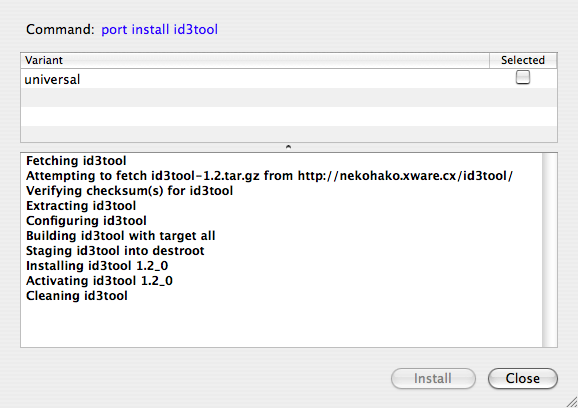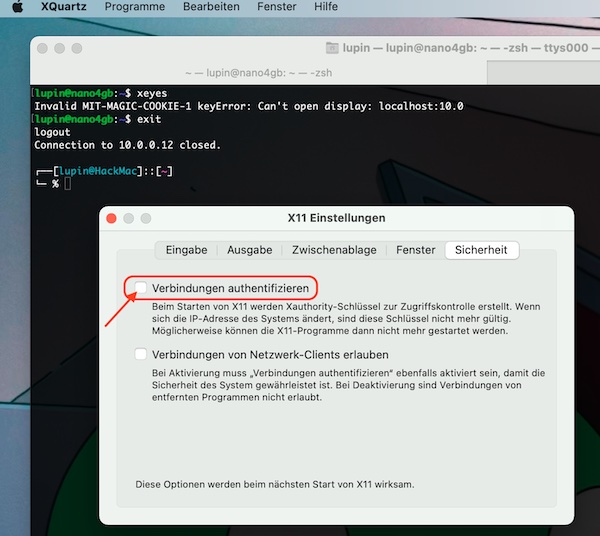

- #INSTALL XQUARTZ MACPORTS HOW TO#
- #INSTALL XQUARTZ MACPORTS MAC OS X#
- #INSTALL XQUARTZ MACPORTS INSTALL#
- #INSTALL XQUARTZ MACPORTS UPDATE#
- #INSTALL XQUARTZ MACPORTS SOFTWARE#
If you have been trying for ages to install ImageMagick, you may have left some old versions lying around. > Updating the ports tree -> MacPorts base is already the latest version The ports tree has been updated.

> Updating MacPorts base sources using rsync MacPorts base version 2.2.1 installed, MacPorts base version 2.2.1 downloaded.
#INSTALL XQUARTZ MACPORTS UPDATE#
The easiest way to do this is first to ensure that old versions of ImageMagick are removed and cleaned up and that you then install (or re-install) with the latest version: brew update # update homebrew itselfīrew rm imagemagick # remove old IM versionsīrew install imagemagick -with-x11 # install latest IM version including X11 support Install Apple developer tools, XQuartz and a package management system. Step 2 - Ensure ImageMagick is correctly installed
#INSTALL XQUARTZ MACPORTS HOW TO#
Below you can read how to setup Nginx, PHP-FPM, MySQL and PhpMyAdmin on OS X 10.10 (Yosemite). So is the perfect time to get rid of the web server stack and replace it with Nginx and PHP-FPP as FastCGI implementation. You can do this with: xcode-select -install Recently my APM(Apache+PHP+MariaDB) installation from macPorts broken down. It is important that your developer tools are up-to-date, especially if you have updated your macOS version since setting them up originally. Step 1 - Install or update Xcode command line tools In general, to use ImageMagick with X11, you will probably be most likely to succeed if you follow the following steps: That converts any file formats that ImageMagick knows into a PNG which the Preview app understands and should be able to represent most images, even those with 16-bit depth and transparency. Then I edited that file and added a line very close to the end, but just above the last line like this: I used this: magick -list delegate | awk '/^Path/ 'Īnd mine is at: /opt/homebrew/Cellar/imagemagick/7.1.0-16/etc/ImageMagick-7/delegates.xml This means you can do things like: magick SomeImage.png -crop 100x100+10+10 display:įor this to work, you need to find your delegates.xml file. configure -disable-osx-universal-binary -prefix=/usr/local/Cellar/imagemagick/7.0.8-66 -disable-silent-rules -with-x11Īnother option that occurred to me was that, rather than installing all of XQuartz, you could just add your own delegate that uses macOS's built-in Preview app and tell ImageMagick to use that, i.e.

When prompted, click Allow to proceed with the download. Browse to and download the XQuartz installer file. The following steps show how to install XQuartz: 1. XQuartz provides a windowing system for bitmap displays, common on Unix-like operating systems. One possibility, pointed out in the comments by was to install ImageMagick interactively: brew install imagemagick -i The last step before installing PuTTY is to install XQuartz.
#INSTALL XQUARTZ MACPORTS MAC OS X#
#INSTALL XQUARTZ MACPORTS SOFTWARE#
On the other hand, MacPorts is completely open source without limiting licenses and it can be used to install other free software apart from python. However, it is important to know that sometimes the installation can take time because, depending on your operating system version, it might compile all the packages/libraries from source code. MacPorts offers a reliable way to install a Python distribution on MacOSX with most of the needed libraries for iSpec.


 0 kommentar(er)
0 kommentar(er)
